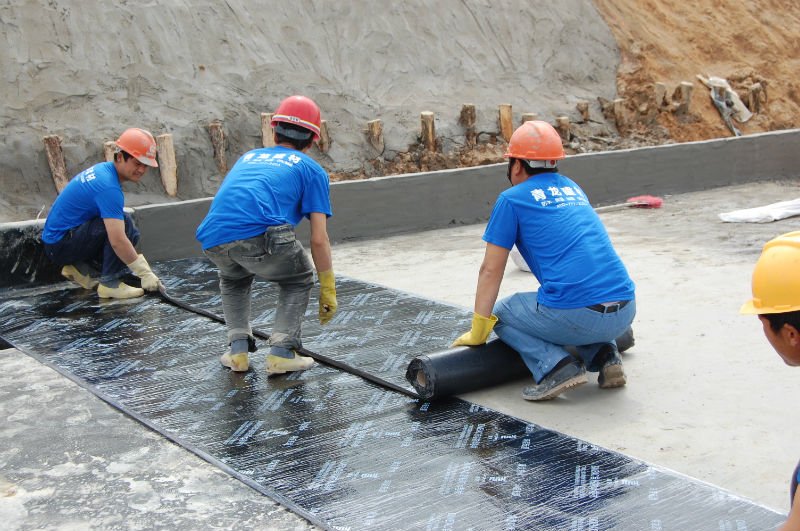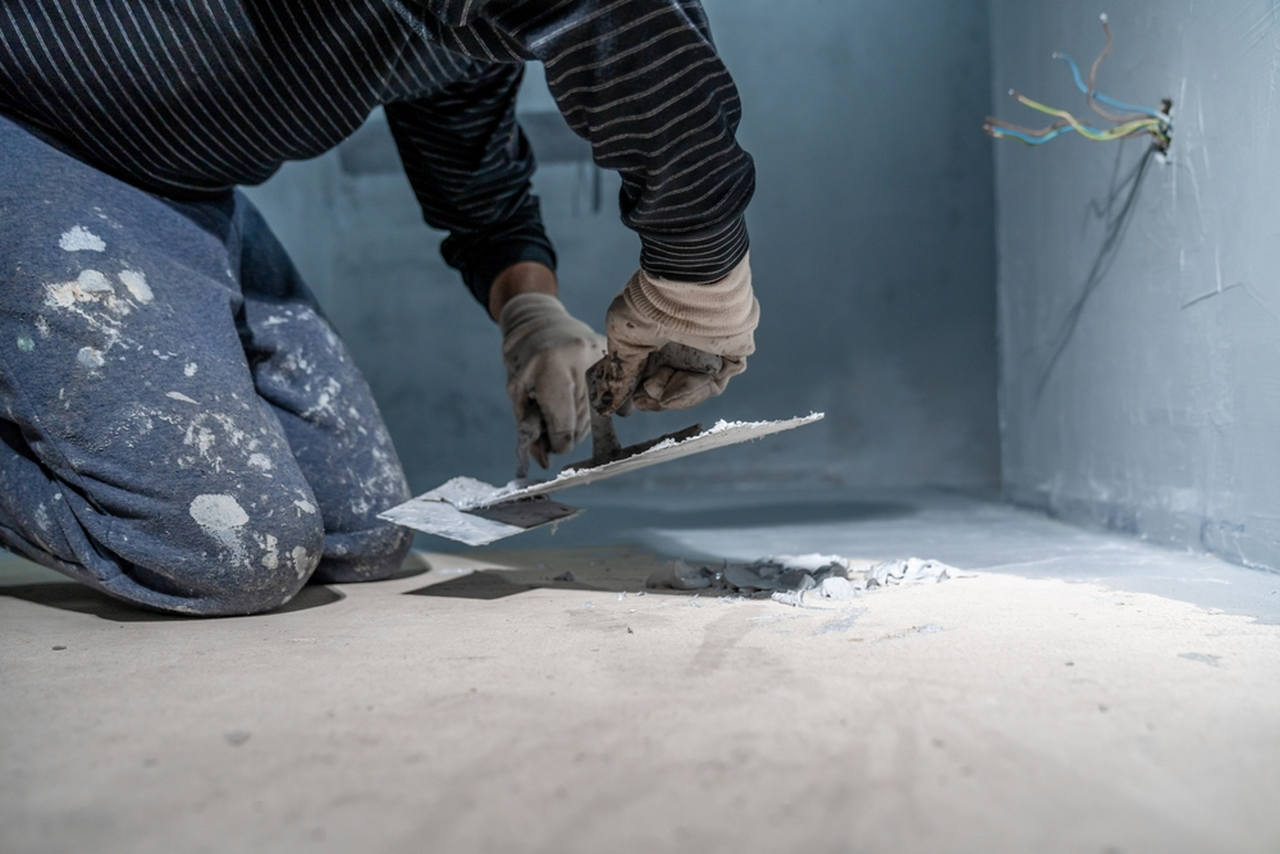How Waterproofing Functions: An In-depth Look at Techniques and Technologies
Waterproofing is essential for shielding frameworks from moisture-related damage. It entails numerous techniques and technologies that create barriers against water invasion. Conventional approaches, such as compressed clay, exist together with modern advancements like liquid-applied membrane layers. Understanding the nuances of these approaches is vital for reliable application. Nevertheless, the effectiveness of any waterproofing solution pivots not just on the methods made use of however additionally on ongoing upkeep and evaluation. What are the essential factors that influence long-term performance?
Comprehending the Essentials of Waterproofing
Waterproofing is an important process that secures frameworks from water invasion, which can cause significant damages over time. This method entails the application of different materials and methods developed to produce an obstacle versus wetness. The primary goal is to stop water from permeating surface areas, which can cause damage, mold and mildew growth, and structural instability.Various variables influence the choice of waterproofing approach, including the sort of structure, its place, and environmental conditions. Understanding the physics of water activity and the homes of different products is important in picking a reliable waterproofing solution.Effective waterproofing not only safeguards buildings but likewise enhances their long life and stability. Normally, it is integrated right into the style stage of building and construction to assure complete protection. As recognition of water-related problems grows, the value of recognizing waterproofing basics comes to be increasingly clear to designers, building contractors, and homeowner alike.
Typical Waterproofing Methods
Conventional waterproofing approaches have been made use of for centuries, depending on time-tested strategies and materials to guard structures from water damages. One of the earliest approaches involves using clay, which, when compressed, produces an all-natural barrier versus moisture. Furthermore, bitumen, a sticky, black product stemmed from petroleum, has been used for its waterproof buildings, often applied to roofings and foundations.Another strategy includes the application of lime-based plasters, which give a breathable layer that permits wetness to escape while protecting against water ingress. Thatch roof covering, a traditional technique still seen in some societies, offers excellent waterproofing because of its snugly packed straw layers.Moreover, making use of rock and block has actually projected, as these products are naturally immune to water when properly set up. Overall, conventional waterproofing techniques stress the value of choosing proper products and building and construction practices to boost resilience against water invasion.
Modern Waterproofing Technologies
Advancements in modern waterproofing innovations have actually reinvented the method structures are shielded from water damages. Innovative techniques such as liquid-applied membrane layers and sophisticated sealants have improved the performance and convenience of waterproofing options. These modern technologies enable for seamless application, minimizing the threat of leaks and making certain extensive coverage over complicated surfaces.Moreover, the combination of clever innovations, such as dampness sensing units and automated monitoring systems, makes it possible for real-time assessment of waterproofing performance. This aggressive strategy helps with timely maintenance and minimizes long-term repair costs.Additionally, developments in spray-applied coatings provide quick application and exceptional attachment, adjusting to numerous substrates while supplying durable security. Techniques like polymer-modified systems additionally improve adaptability and durability, making them appropriate for diverse environments. Generally, modern waterproofing innovations not just reduce water invasion but additionally add to the long life and sustainability of frameworks, noting a considerable change in the industry.
Materials Used in Waterproofing
The effectiveness of waterproofing solutions greatly depends on the products made use of in their application. Different products are used to develop barriers against water ingress, each with special properties fit for various atmospheres. Generally made use of products consist of membranes, coverings, and sealants.Liquid-applied membrane layers, commonly made from polyurethane or acrylic, create a seamless barrier that adapts to intricate surface areas. Sheet membranes, generally created from rubber or thermoplastic, deal sturdiness and are excellent for bigger locations. Additionally, cementitious waterproofing materials, composed of cementitious substances, give outstanding adhesion and flexibility.Sealants made from silicone or polyurethane are necessary for joints and seams, making sure thorough protection. Moreover, innovative products, such as geo-composite membrane layers, incorporate numerous features, enhancing performance. Overall, the option of waterproofing products is essential in attaining resilient and effective water resistance, tailored to specific task needs and environmental problems.
Typical Applications of Waterproofing
Waterproofing plays a vital role in various sectors, guaranteeing the longevity and integrity of frameworks. Typical applications consist of residential options that safeguard homes, commercial infrastructure that safeguards services, and commercial settings that need durable security against moisture. Understanding these applications highlights the relevance of waterproofing in maintaining both security and functionality across different settings.
Residential Waterproofing Solutions
Several house owners deal with obstacles with wetness invasion, making efficient household waterproofing options vital. Various techniques exist to resolve this problem, consisting of exterior and interior waterproofing systems. Inside solutions commonly entail the application of sealants and coatings to basement wall surfaces, which aid avoid water seepage. Outside methods usually consist of the installation of drain systems and over at this website water-proof membranes that divert water far from the foundation.Additionally, home owners may think about sump pumps to get rid of water buildup and dehumidifiers to regulate moisture degrees. Appropriate grading and using seamless gutters likewise play an important duty in managing water flow around the home. By applying these strategies, home owners can substantially decrease the threat of water damages and mold and mildew growth, ensuring a dry and secure living atmosphere.

Business Facilities Security
Effective waterproofing remedies play an important function in the defense of business infrastructure. Water Solutions. These techniques are necessary for protecting buildings, vehicle parking frameworks, and bridges from water damage, which can endanger architectural integrity and cause costly fixings. Usual applications include the installation of membrane layers, coatings, and sealers that produce obstacles versus wetness infiltration. Areas such as cellars, roof coverings, and exterior walls are commonly focused on to ensure long life and sturdiness. In addition, waterproofing systems can boost energy efficiency by protecting against water-related issues that might lead to mold and mildew development and deterioration. By applying durable waterproofing measures, homeowner look at here can secure their financial investments and maintain operational efficiency, eventually adding to the general sustainability of industrial facilities
Industrial Applications Overview
While numerous markets deal with distinct obstacles, the need for reliable waterproofing solutions remains a constant in commercial applications. Industries such as manufacturing, building and construction, and power commonly come across atmospheres where moisture direct exposure can jeopardize architectural integrity and operational performance. In producing centers, waterproofing is critical for protecting machinery and materials from water damage. In building and construction, it safeguards foundations and cellars versus groundwater seepage. The energy industry depends on waterproofing for the defense of equipment in hydroelectric plants and overseas structures. Furthermore, food processing markets make use of waterproofing to guarantee health and compliance with security criteria. Overall, reliable waterproofing solutions are important for improving durability, safety, and productivity across numerous commercial go to website settings.
Upkeep and Long Life of Waterproofing Solutions
Waterproofing options are developed to provide lasting security versus dampness invasion, regular maintenance is important to guarantee their efficiency and longevity. Routine evaluations play a substantial function in recognizing prospective concerns such as cracks, peeling off, or indications of water damages. Addressing these problems promptly can stop additional wear and tear and costly repairs.Additionally, cleansing the surface area of waterproofed areas aids eliminate dust and particles that can jeopardize the honesty of the waterproofing barrier. It's likewise advisable to reapply protective layers or sealants as recommended by producers to keep optimal performance. Environmental elements, such as UV exposure and extreme climate condition, can influence the life expectancy of waterproofing materials, making routine evaluation vital
Often Asked Concerns
Can Waterproofing Be Applied in Cold Weather?
The inquiry of using waterproofing in chilly weather condition increases worries regarding attachment and curing. Many products may not execute at their finest in reduced temperatures, demanding careful choice and factor to consider of details standards for effective application.
For How Long Does Waterproofing Usually Last?
The duration of waterproofing performance varies based upon materials and ecological elements. Generally, it can last from five to ten years, yet routine maintenance and examinations are important to ensure peak performance and longevity.
Is DIY Waterproofing Effective and Safe?
The performance and security of do it yourself waterproofing depend upon different aspects, consisting of material top quality and application technique. While some individuals accomplish adequate outcomes, others may encounter concerns that jeopardize lasting security and architectural stability.
What Are the Indications of Failing Waterproofing?
Signs of falling short waterproofing consist of visible water spots, peeling off paint, mold growth, musty odors, and wetness in walls or ceilings - Yard drainage Omaha. These indicators suggest compromised obstacles, necessitating prompt evaluation and possible remediation to protect against additional damage
Exactly how Do I Choose the Right Waterproofing Service Provider?
